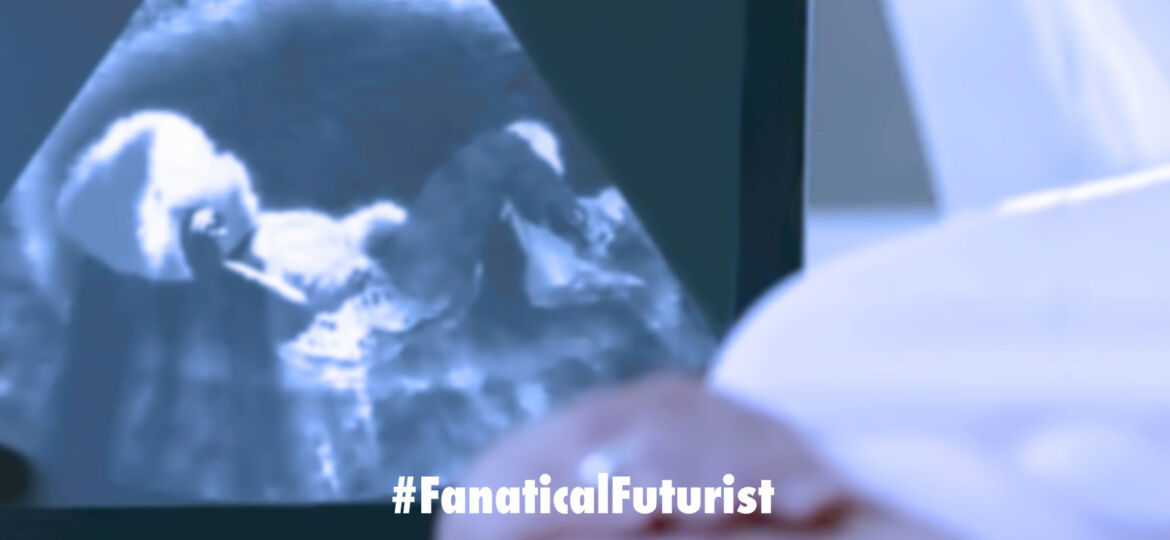
WHY THIS MATTERS IN BRIEF
In the short term this technology will help save premature babies lives, and in the long term it could hasten the end of mom and dad, and accelerate the development of the first truly synthetic humans.
 Interested in the Exponential Future? Connect, download a free E-Book, watch a keynote, or browse my blog.
Interested in the Exponential Future? Connect, download a free E-Book, watch a keynote, or browse my blog.
A little while ago I reported on a new first of a kind artificial womb, that looked like the equivalent of a clear plastic bag in a lab, which carried a baby lamb foetus to term. And now, as researchers eye using the technology for humans to use, a team in Holland have been given a grant of €2.9m (£2.6m) to create an artificial womb prototype for use in clinics for human premature babies. The researchers also think that the technology will be ready for human trials “within ten years.”
Furthermore, stepping even further into the future, when combined with new stem cell breakthroughs that have let researchers clone animals, and create viable human eggs and sperm from all manner of cell types, including human blood cells, that eliminate the need for “mum and dad” this same technology could one day see us breed and “grow” synthetic humans, like the ones Harvard are trying to create by 2036 – think of the way that human drones are bred in Star Wars in big drone factories and you’ve got the picture. Boom! From sci-fi to sci-fact – my job as a futurist here is done. Exit stage right.
Anyway, back to the story. The model, which is being developed by researchers at the Eindhoven University of Technology, would provide babies with artificial respiration. However, unlike current incubators the artificial womb would be similar to biological conditions, with the baby surrounded by fluids and receiving oxygen and nutrients through an artificial placenta that will connect to their umbilical cord.
Guid Oei, a professor at the Dutch university and gynaecologist at the nearby Maxima medical centre, said current approaches are problematic as premature babies do not yet have fully developed lungs or intestines – meaning that attempts to deliver oxygen or nutrients directly to such organs can result in damage. An artificial womb, Oei said, would be a game changer.
“When we put the lungs back under water then they can develop, they can mature, but the baby will receive the oxygen by the umbilical cord, just like in the natural womb,” he said.
The team hope to have a working prototype of their artificial womb ready for use in clinics within five years – meaning it could be a world first. The funding has come from the Horizon 2020 EU programme.
According to the charity Tommy’s, babies born before 22 weeks have almost no chance of survival, while at 22 weeks the chance is only around 10%. But just two weeks later, survival rates rise to about 60%. Oei said that at present, about 1 million babies worldwide die due to prematurity, while those that survive are at risk of a range of disabilities.
In 2017 researchers at the Children’s Hospital of Philadelphia demonstrated that their lamb based artificial womb, known as the “biobag,” could keep alive lambs that were born at the equivalent of 23 weeks of a human pregnancy. Over the weeks they were in the biobags, the lambs continued to develop, turning from bald to fluffy in the process, and astonishingly after being removed from the biobags, the lambs grew up normally.
“The experiments are very important because they show that it is indeed possible to keep an animal alive in a kind of liquid-based environment,” said Oei. “But we are working now on the prototype which will really replace the womb for human babies.”
Oei added that he and his colleagues are planning to develop their prototype using 3D printed replicas of human babies that contain a host of sensors, and that the artificial womb will not simply be a plastic biobag, but will recreate the experience of being in the womb – including the sound of the mother’s heartbeat.
“When they are in this environment, they just feel, and see, and smell, and hear the same sounds as when they are in the womb of the mother, he said.
Elizabeth Chloe Romanis, a lawyer at the University of Manchester who has explored the bioethics of artificial wombs, warned that the technology would raise questions – including about which babies it should be tested on, as well as the long-term implications of being gestated in an artificial womb.
“The law treats foetuses and babies very differently, so how does the subject of the artificial womb fit in? Is it possible to turn off the artificial womb, and in what circumstances?” she said, adding that there are also questions about how such a gestation might be viewed by society, particularly if it becomes an alternative to a “natural” pregnancy, like the Star Wars example.
“It is clear that the legal and ethical issues emerging from the technology must be talked about now, in advance of the artificial womb becoming a reality,” she said. However, let’s face it governments and regulators are all appalling bad when it comes to discussing this stuff early so you can probably expect those conversations to take place when these “unnatural” pregnancies become the norm… Star Wars on the other hand had no such ethical dilemmas to discuss so perhaps there’s an example there that the governments of the future can draw on.
















